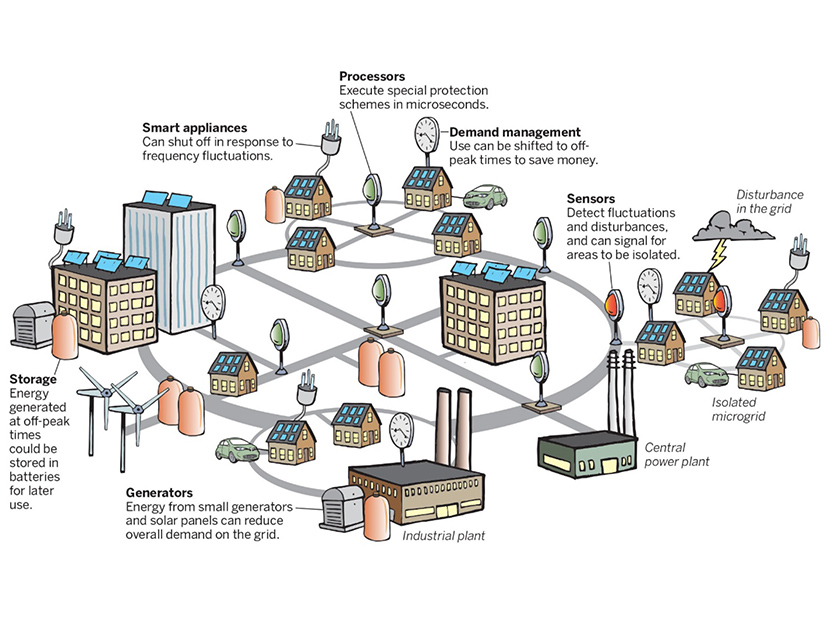LANSING, Mich. — Environmentalists are urging Michigan lawmakers to end the 1% cap on distributed energy production following a report for the Public Service Commission that concluded there was no economic reason to maintain the limit.
The report, produced by the Regulatory Assistance Project (RAP), was the subject of a Sept. 14 hearing by the state Senate Energy and Technology Committee. Neither the report nor the comments were explicitly directed at persuading lawmakers to pass HB 4236, which would eliminate the cap that has been in place since 2016.
But environmentalists argued the report and hearing proved Michigan’s major utilities have been disingenuous in arguing the cap should continue because they are subsidizing customers with rooftop solar.
Michigan’s law requires utilities to allow distributed energy production up to 1% of their average peak load for the previous five years. Utilities can, on their own, alter that cap. DTE Energy (NYSE:DTE) has not yet reached the 1% cap. CMS Energy (NYSE:CMS) has raised its cap to 2%, and the Upper Peninsula Power Co. (where solar usage has proven very popular) raised its cap to 3%. At the end of 2020, Michigan ranked 32nd out of 50 states in megawatts of distributed solar PV at 98.9 MW, according to the U.S. Energy Information Administration.
The RAP report said the inflow/outflow model, which replaced net metering for new DG customers, eliminated “most reasonable arguments about significant cost shifting from participating DER customers to non-participating customers.”
Under the new model, also called instantaneous netting, inflow (power delivered from the distribution system) is charged at the relevant retail rate, while outflow (power delivered to the distribution system) is only credited at the generation portion of the retail rate, excluding transmission costs for most utilities.
“The main argument standing in the way of affordable, reliable clean energy has once again been proven false by the Michigan Public Service Commission,” Michigan League of Conservation Voters deputy director Bob Allison said in a statement after the meeting.
“The utilities say they’re ‘all in’ for clean energy yet have not supported this critical bipartisan solar bill languishing in committee,” Charlotte Jameson, program director for the Michigan Environmental Council, said in a statement.
The draft report, “Smart Rate Design for Distributed Energy Resources,” looks at three “potential pathways” but does not recommend which the state should choose:
-
-
- The “gradual evolution pathway” is described as making modest improvements to the efficiency of pricing for new DG customers, with associated cost allocation improvements and a minimal need for new customer education, process reforms, or administrative burdens.
- The “advanced residential rate design” is an “aggressive effort to enlist a large segment of residential customers to optimize their usage, storage, and generation patterns” to lower overall system costs while ensuring fair cost recovery through new rate structures.
- The “customer choice and stability” pathway is “a simple and understandable set of options to customers that are fair to non-participating ratepayers, with stable payment schemes that may lower barriers for both customers and DER companies.”
-
The report was requested by both the Michigan Senate and PSC members. The draft was opened to public and legislative comment Sept. 1, with a final version expected to be released in November.
Majority Republicans on the committee expressed disappointment that the report did not provide more specific advice.
Answering questions from lawmakers, Mike Byrne, the PSC’s chief operating officer, said there was no cost shifting from solar customers to non-solar customers.
“There is no need to keep that 1% cap in place,” Byrne told the Senate committee.
Asked in an interview if the 1% cap was needed, PSC Chair Dan Scripps responded, “No, it’s not.”
When the cap was put in place, “it was a way of seeing how it would roll out in Michigan,” Scripps said, “and it was also done at a time when we had net metering. We don’t have net metering anymore. So from a financial perspective, we don’t believe there are cross subsidies between those with solar and those that don’t. But perhaps even more importantly, we have a process for adjudicating in our rate cases. And utilities have made the case that they believe cross subsidies exist and a different way of pricing is needed. And some of the clean energy advocates have said the inflow/outflow mechanism we’ve approved in a few cases now doesn’t fully reflect the [environmental and consumer] benefits that solar offers.”
Ultimately, the legislature must decide what to do with the cap, Scripps said.
Environmental groups found new ammunition with the report and comments. Allison said utilities “must acknowledge” they were wrong in claiming there was a subsidy. Jameson added, “it’s time to scrap this cap.”
Utility officials last week declined to endorse the environmentalists’ conclusions.
A DTE spokesperson noted Friday that the utility has previously said it would negotiate on raising the cap once the subsidy question was answered.
A spokesperson for CMS said the company is reviewing the draft report and will work with the legislature on questions members may have. Like DTE, CMS said previously it would favor eliminating the cap, if the cost shift issue is addressed.
Rep. Greg Markkanen (R), the sponsor of the bill, said he has heard nothing either from the chair of the House Energy Committee, which is holding HB 4236, or anyone else on moving the bill. He was glad some groups were issuing a renewed push for the legislation, but there has been no actual movement.
“I’ve even said I would negotiate with the utilities,” he said, “but they still refuse.”

